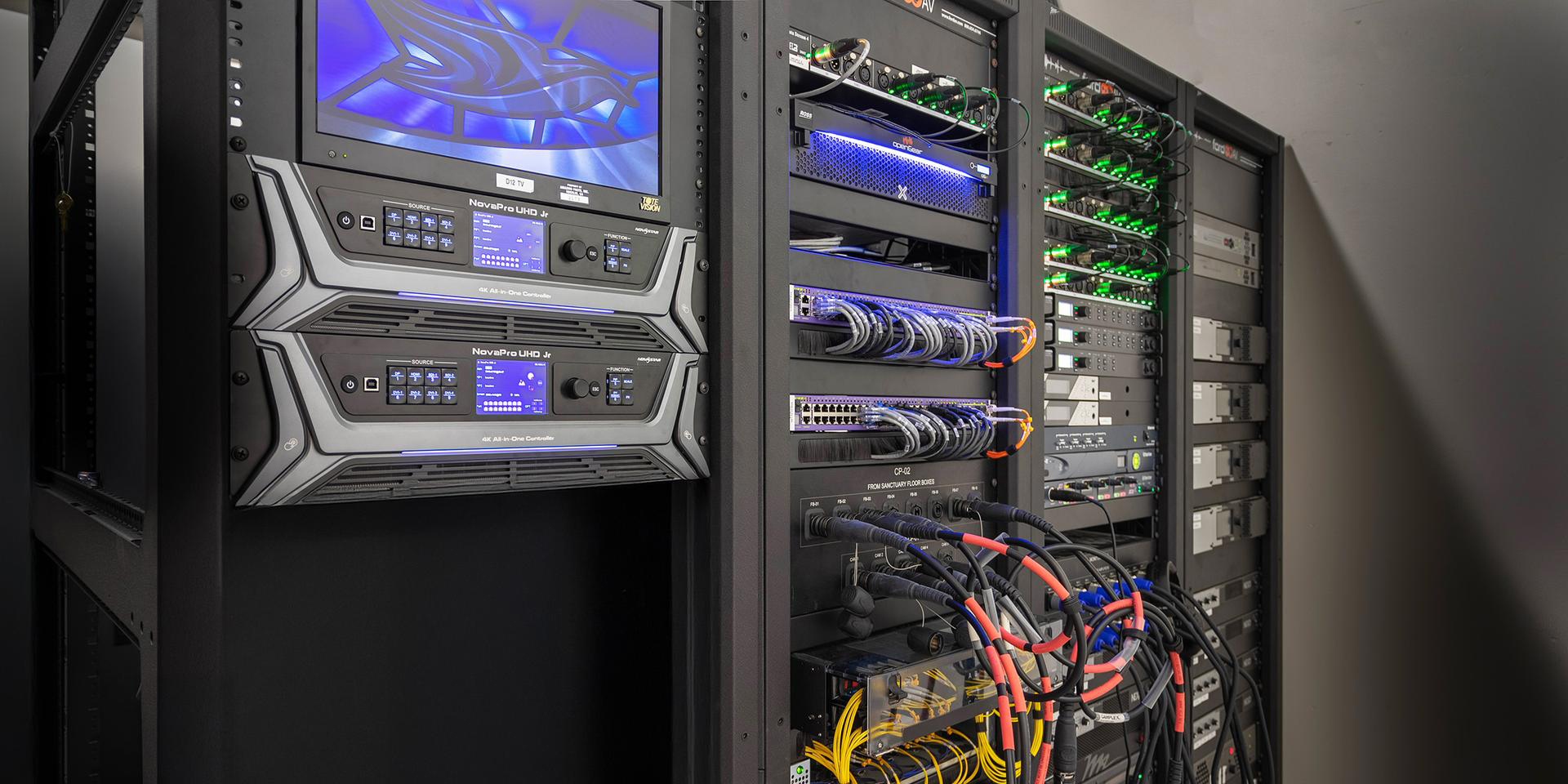
Organizations looking to scale, manage, and future-proof their audiovisual systems are turning to AV over IP. By sending video, audio, and control signals over standard network infrastructure, AV over IP offers flexibility and centralized management. Making the leap requires planning, cross-departmental communication, and a solid grasp of networking fundamentals.
Plan Networking Early
The most successful AV over IP projects are determined before a single device is installed. Network readiness should be addressed at the beginning, specifically VLAN configuration, switch capabilities, and multicast support. This is part of the core design phase, not an afterthought.

A detailed statement of work should document everything: IP addressing schemes, port assignments, POE budgets, and whether the network can handle the added load. This early planning avoids last-minute surprises, reduces downtime, and makes the actual deployment smoother and faster.
Understand and Configure Multicast
Multicast is what makes AV over IP efficient by allowing one stream to serve multiple endpoints without saturating the network. When multicast is not configured correctly, it can behave like a broadcast storm, flooding the network with traffic and taking down unrelated systems.
Collaborate Across Teams
Early alignment between these teams is critical. Everyone needs to understand the system’s network requirements, the impact on existing traffic, and the plan for ongoing management. This shared understanding minimizes disruptions and builds trust between departments.

AV over IP breaks down the old “AV vs. IT” silo. Your AV hardware now runs on the same infrastructure as phones, emergency alert systems, and enterprise applications. Network engineers, AV techs, and facilities managers all have a stake in the project.
Document Everything
In the world of AV over IP, documentation is your safety net. That includes port numbers, VLAN IDs, device hostnames, IP addresses, POE draw, firmware versions, and even configuration files.
This documentation should be living, not static. Store it centrally, update it after changes, and ensure it is part of both the installation package and the service handoff. When something goes wrong or when you expand the system, having clear, accurate documentation is the difference between a five-minute fix and a multi-day outage.
Core Concepts for AV over IP Success
Switchers and Network Infrastructure
Traditional AV systems relied on centralized matrix switchers, with transmitters and receivers delivering point-to-point connections. AV over IP replaces this with encoders and decoders that send packetized signals over standard network switches. This shift eliminates the physical constraints of fixed inputs and outputs, making it easier to expand and reconfigure systems.

Unicast, Broadcast, and Multicast
- Unicast sends data from one device to one device. Simple, but inefficient for multiple endpoints.
- Broadcast sends data to every device on the network, whether they need it or not. Risky for bandwidth and stability.
- Multicast sends data to only those devices that subscribe to it. Ideal for AV over IP, as long as it is properly configured.
The right multicast setup ensures scalability, efficiency, and stability, whether you are streaming to three endpoints or three hundred.
The VLAN Advantage
Segmentation through VLANs is the best practice for AV over IP. An AV-specific VLAN keeps traffic isolated, prevents interference with other systems, and simplifies troubleshooting. On larger campuses, VLANs can also align with building subnets, ensuring that multicast traffic stays where it belongs.
Scenarios for Deployment
Whether you are running AV over IP on an isolated classroom switch, integrating with a building network, or leveraging an enterprise-wide infrastructure, the principles remain the same: verify switch capabilities, configure multicast end-to-end, and confirm POE capacity.

AV Over IP With Ford AV & Legrand
AV over IP is more than a technology shift; it is a workflow shift. Success depends on early planning, precise configuration, and tight coordination across teams. Get those right, and you will have a scalable, flexible, and easily managed AV infrastructure ready for the future.
Partner with America’s Leading AV Technology Company

- 50+ Years of Experience – Designing and integrating innovative audiovisual systems for organizations across multiple industries.
- Nationwide AV Services – Local teams supported by a national network for dependable AV installation, maintenance, and ongoing support.
- Comprehensive Expertise – From collaboration rooms and video conferencing systems to digital signage, enterprise control systems, and managed AV services.
- Scalable, Future-Ready Solutions – Engineered for reliability, flexibility, and seamless user experiences.
- Proven Performance – Trusted by Fortune 500 companies, universities, government agencies, houses of worship, and more.
Ready to connect with Ford AV professionals? Fill out the form below to transform your space with expertly designed and integrated AV technology.







